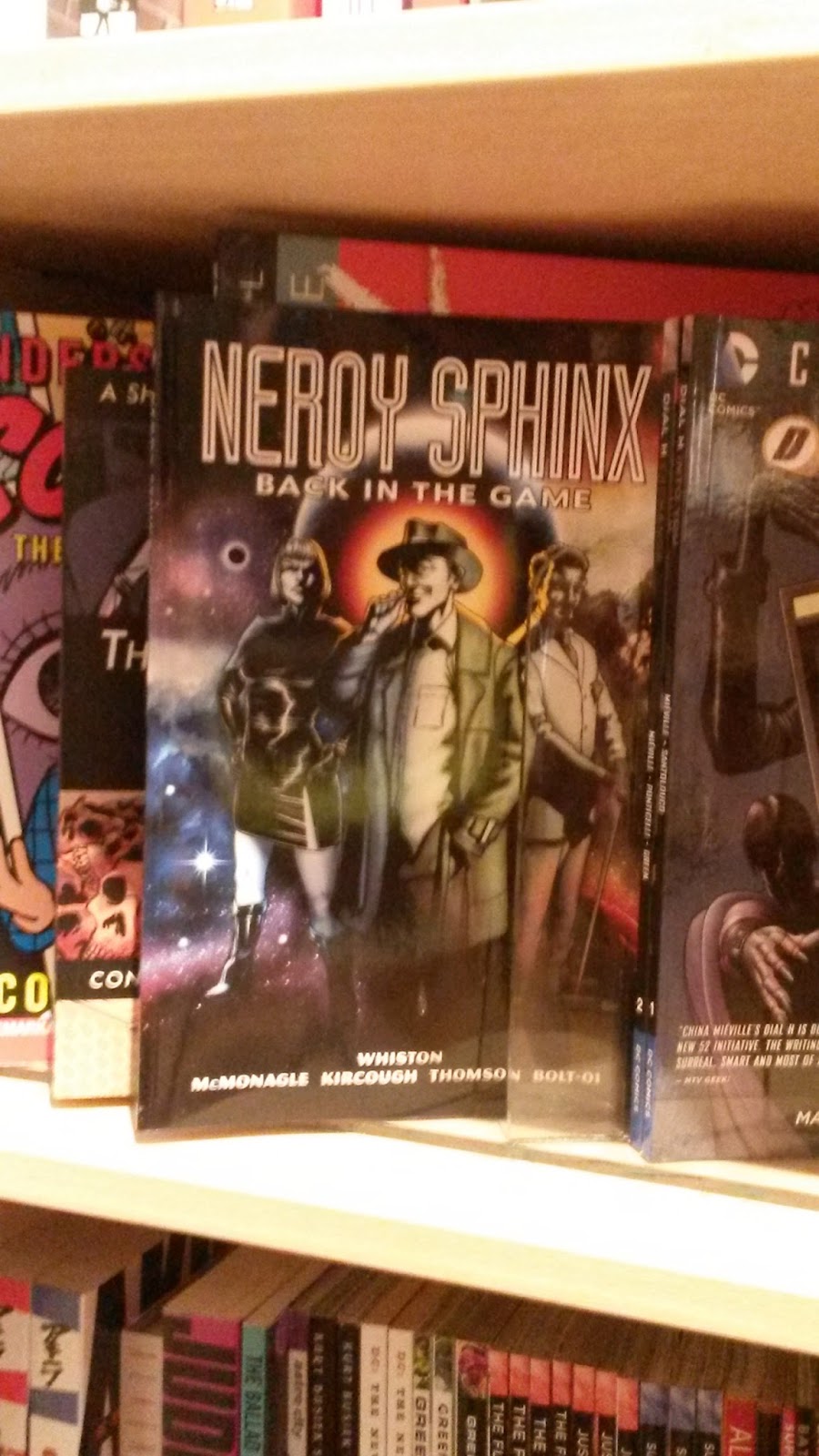
 Review Fix chats with comic book writer Daniel Whiston, who discusses the creation process and inspiration behind his series, “Neroy Sphinx: Back in the Game.†Inspired by Alan Moore and the Judge Dredd series, Whiston discusses how the series has affected him as a creator and his goals for the franchise.
Review Fix chats with comic book writer Daniel Whiston, who discusses the creation process and inspiration behind his series, “Neroy Sphinx: Back in the Game.†Inspired by Alan Moore and the Judge Dredd series, Whiston discusses how the series has affected him as a creator and his goals for the franchise.
Review Fix: What was the inspiration for this book?
Daniel Whiston: 2000AD – a British SF anthology comic that I grew up reading as a kid. Neroy Sphinx was originally intended to be a character in a Judge Dredd homage story for FutureQuake, a UK anthology with access to 2000AD’s back catalogue, but I quickly realised that he wouldn’t really work in Dredd’s world. No space for him to operate, really. So he took on a life of his own. Originally it was only intended to be a one-off story (‘One Last Job’), but the publishers asked me when I was going to write the next one. My initial response was ‘Eh? There isn’t a next one.’ But then there was, and the rest followed after as I painfully reverse-engineered a backstory and mythology for what I’d initially thought of as a disposable character.
Review Fix: What did you read as a kid and how did it influence this book?
Whiston: I was lucky enough to be just (barely) old enough to read the classic UK comic Warrior when it came out, just as Alan Moore was cutting his teeth on MarvelMan, V for Vendetta and all the rest. To an 11-year-old, it was mind-warping stuff. Literally.
Warrior has remained a massive influence on the way my mind works, in general, and not just on my comics writing, in terms of its anarchic attention to detail and virtuoso diversity when it comes to storytelling and world-building.
And one particular story – Laser Eraser and Pressbutton (a particularly vile SF epic featuring a meat-cleaver-wielding bald cyborg and an elfin female assassin) – has become a spiritual lodestar for Neroy.
And of course, 2000AD. First and Last and Always.
Harry Harrison’s Stainless Steel Rat novels would seem an obvious reference – and I devoured them as a kid, and have a real fondness for Harry Harrison, God rest his soul – but for whatever reason they aren’t actually a conscious influence on the book.
Review Fix: This Graphic Novel would be great as an animated film? Any plans?
Whiston: Thank you kindly. As it happens, I do think that Back in the Game works well as a ‘Season One’, but it could equally be a live action thing. Plans – nothing concrete yet, but I intend to shop it around to development agencies and see what happens. I made some informal contact with the Cartoon Network over the summer, but just in terms of a friendly opportunity that came up. Nothing to report from CN yet, though – possibly the romantic interlude with the Altarian Slime Raptor put them off. But if anyone wants to discuss the possibility I’d love to hear from you.
Review Fix: What about a video game?
Whiston: For my day job I sometimes write games, but it’s funny, that hadn’t occurred to me. Yet in retrospect, it’s very well-structured for something like that in terms of how the character works. You know – ‘set up a seemingly impossible situation, put his back against the wall and then use what comes to hand to jury-rig a bizarre solution in the fashion of some kind of crazed, futuristic MacGyver.’ So I could see that working. And as long as Fenris was around, there’d be plenty of bone-crunching violence. So again, that could work.
Review Fix: Who are your heroes in the industry?
Whiston: Alan Moore, Frank Miller, Warren Ellis, Grant Morrison, John Byrne, John Wagner, Garth Ennis, Alan Grant and the incomparable Carlos Ezquerra.
Review Fix: Why should someone read the book?
Whiston: That’s kind of a hard question to answer, in the sense that when you know something inside-out, it takes a lot of empathy to imagine being amused, shocked, intrigued and all those other lovely reactions that essentially involve being Surprised by Developments. But based on what people have told me who enjoyed the book, I’d say that it seems to combine the different elements quite successfully – it’s a Sci-Fi romp with reliably unpredictable twists and turns that works within the anthology structure it was rather arbitrarily born within. By which I mean the storytelling is dense, streamlined and energetic, there’s always a lot going on, and it’s by turns subtle, funny, gross and sad. At least I hope so. Plus it’s ‘pleasingly reminiscent of the Karma Sutra.’ Apparently. I probably should just have said that at the start, and left it at that.
Review Fix: What have you learned about yourself as an author through this book?
Whiston: That I work well within tight spaces, and I seem to be able to create characters that refuse to stay within the limits I’d intended for them. For example, reviewers consistently comment on how selfish and immoral Neroy himself is when I thought he’d come across as much more of a likeable good guy. Probably largely seeing as I thought I was basing him on what I’d do in a given situation.
Review Fix: What’s next?
Whiston: Book 2! Where everything comes together in an entirely unpredictable but nevertheless hugely satisfying conclusion. Then there’s an unpublished novel in the drawer that I finished over the summer and a killer idea for a Mark Millar-esque ‘done in one’ high-concept graphic novel with superheroes and aliens and all good things.


Leave a Reply